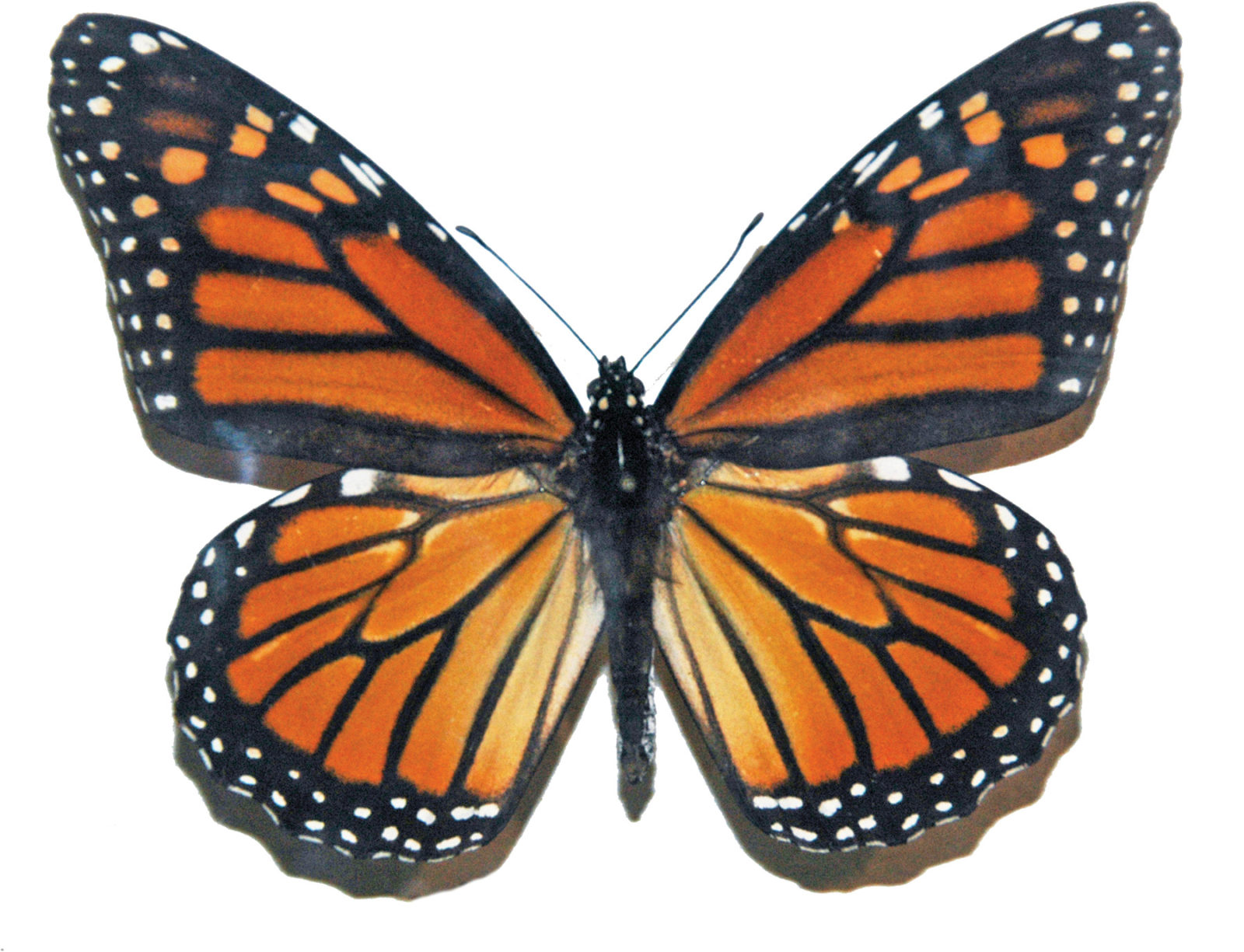
It should be early for monarchs. But as a flutter of brown and orange sighs past me, windblown and lonely, during a long amble along the Marin Headlands in April, I exclaim, and I freeze. I watch it land with delightful poise on a Franciscan paintbrush. A monarch! But it is off and fluttering far from me before I can be certain. The internet, killer of dreams, proclaims that it was obviously a Hoffman’s checkerspot, or, perhaps, a northern checkerspot, or a painted lady, or a Mylitta crescent.
But I am in need of a kind of optimism-of-the-unexpected. And so, I wonder whether it could have been a locally breeding monarch—harbingers all at once of apocalypse and rebirth—akin to those monitored by entomologist David James in the winter and spring of 2021.
These are the facts of the western monarch: they migrate in late fall, spend the winter in coastal California, and disperse across the western United States to breed in spring and summer. In the 1980s a recorded 4.5 million gathered in the winter sites. But by January 2021, the migrating butterflies had all but vanished, with less than 2,000 butterflies spread across the edge of a continent.
That same winter, amid a profusion of red, gold, and creamy purple milkweed, amid sun-yellow Euryops, in fragrant, spiky rosemary, and on rounded petals of common weedy field mustard, careful observers noted flutters of brown and orange. Soon, they saw dozens of soft, crawly larvae, and then, on the undersides of leaves, found first one small white-and-pale-green egg, and then another, and then another, and then more! Clustered together in colorful urban patches of nature in the South Bay, specifically the Googleplex in Mountain View and Rinconada Community Garden in Palo Alto, the monarchs were breeding. In the winter!
It is known that small populations of monarchs breed in the winter. They have set up permanent shop in Los Angeles, for instance. But the population boom in the Bay Area had not been seen before. It was unusually warm that fall, which may have accounted for the numbers. And tropical milkweed, which, unlike native milkweed, flowers through the winter and creates a suitable habitat for breeding, was abundant in gardens.
What’s more, reports of backyard monarchs breeding in summer in cities have increased dramatically since 2014, though of course that might be because more people want to report monarch sightings. But the growth of local, breeding monarchs is seen, at least by some, as a sign of the resilience of the monarchs, their ability to find new ways to persist in the face of an increasingly threatened migration. Might we be seeing the growth of a resident population of monarchs in the Bay Area?
“A lot of people have this feeling that without the migration, the monarch is nothing,” says James. “That’s not necessarily true. If we got rid of the migration, the butterflies could still continue. For humans, that would be a pity. But in the ecology of things…it’s not that bad.”
The question may be whether we can separate the human from the butterfly. At almost every stage of life, the butterflies are threatened by climate change, habitat degradation, and increased use of neonicotinoid pesticides. At the same time, monarchs flourished in habitats that people made particularly habitable. People and monarchs are inextricably woven together, orange and brown, creating one pattern.
To James, the monarchs will do what they must to survive. And carving out small niches in urban dwellings is only the latest way butterflies have always exploited human behavior. It is humans who may struggle to adapt. “I have a lot of confidence and faith in the adaptability of the monarch to outlive us,” he says. “[But] we are so used to seeing it abundant and common. It may be a shock for people to see that it becomes a rare butterfly, for a while at least. That’s the thing that gets most people. It might be something we have to cope with in the future. But,” he adds, “the butterfly will still have the ability to bounce back. It’s like a cockroach.”
The story of the monarch has never been only about facts. It is about interest, attention, and proximity. To be close to something, perhaps close enough to brush its wing with the tip of a finger, is to be thrown into attention and, maybe, into love. The monarch migration may yet bounce back—the winter of 2022 saw the highest number of migrating monarchs since 2016. But it cannot be denied that the monarch population in the Western United States is declining, and small, urban populations are not likely to replace them. Many of us—if we are not lucky enough to live near a local population—may need to find new ways to be in proximity.
To tell a story is to summon phantoms from the dark, and in the brief illumination—in the millisecond it takes for wings to beat, for wind to catch, for something cherished to move on—to try to pin it there. It is to say: these are the details worth repeating, this is what I would like to hold on to.
We do not know what will become of the monarchs. But what we tell ourselves about their changes may help us change. Deciding which details to hold on to, which story to tell, can be a way of finding proximity, and attention, and love, which is hope, again.
Here is where I land: I saw a monarch in the Marin Headlands last weekend. A new Bay Area neighbor, adapting to a changing world, making do with what is available, as we all must.




